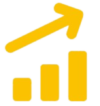Description
Google has developed an artificial intelligence (AI) tool called DIAL that can predict the risk of heart disease from an eye scan. The tool, which was trained on a dataset of over 285,000 retinal scans, can predict the five-year risk of heart disease with 70% accuracy.
Table of Contents

Introduction
DIAL works by identifying changes in the blood vessels of the retina, which are thought to be a marker of cardiovascular disease. The DIAL can also identify other eye diseases, such as diabetic retinopathy and glaucoma.
Google is still in the early stages of developing DIAL, but it has the potential to be a valuable tool for early detection of heart disease. The DIAL could be used to screen people who are at high risk of heart disease or to monitor people who have already been diagnosed with the disease.
How does DIAL work?
DIAL uses deep learning to identify changes in the blood vessels of the retina. The tool is trained on a dataset of retinal scans that have been labeled with the presence or absence of heart disease. The tool then uses this data to learn how to identify the patterns that are associated with heart disease.
When a new retinal scan is inputted into DIAL, the tool analyzes the scan and identifies any changes in the blood vessels. These changes are then used to predict the risk of heart disease.
How accurate is DIAL?
DIAL has been shown to be 70% accurate in predicting the five-year risk of heart disease. This means that 70% of the people who were predicted to have a high risk of heart disease by DIAL actually developed heart disease within five years.
It is important to note that DIAL is not a perfect tool. It is possible for the tool to make mistakes, so it is important to get a medical opinion if you are concerned about your heart health.
When will DIAL be available?
Google has not yet announced a public launch date for DIAL. The tool is still in the early stages of development, and Google is working to improve its accuracy and reliability.
It is possible that DIAL could be launched in a limited capacity in the near future, such as in research studies or for use by healthcare professionals. However, it is more likely that the tool will not be widely available until it has been further developed and tested.
What are the benefits of DIAL?
DIAL has the potential to be a valuable tool for early detection of heart disease. The tool could be used to screen people who are at high risk of heart disease or to monitor people who have already been diagnosed with the disease.
Early detection of heart disease can lead to early treatment, which can improve the chances of a good outcome. DIAL could help to save lives by identifying people who are at risk of heart disease and providing them with early treatment.
What are the limitations of DIAL?
DIAL is still in the early stages of development, so there are some limitations to the tool. For example, DIAL is not yet as accurate as other methods of predicting heart disease, such as blood tests.
Additionally, DIAL is only able to predict the risk of heart disease for five years. It is possible that the tool could be used to predict the risk of heart disease for longer periods of time, but this has not yet been studied.
Overall, DIAL is a promising new tool for early detection of heart disease. The tool is still in the early stages of development, but it has the potential to save lives by identifying people who are at risk of heart disease and providing them with early treatment.
Search us on Google by typing Interestopedia.com
